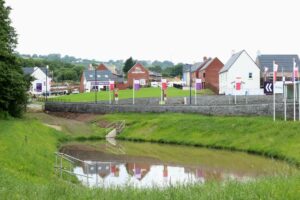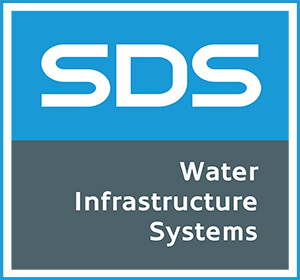SPENDING an afternoon watching the Environment Bill debated in the House of Lords might not be everybody’s ‘cup of tea’. So, you may not have spotted that some tiny chinks of light shone through all those amendments and set-piece speeches for those of us holding out for better standards of design, construction and maintenance of Sustainable Drainage Systems (SuDS).
They might fall into the ‘boring but important’ news category for many – but these tiny comments are a BIG deal – in England at least – for those, me included, who have been following the progress of SuDS implementation for more than a decade.
SuDS Standards Review
During a session on August 27th, Environment Minister Lord Goldsmith committed to a review that could make it compulsory to build SuDS to ministerial standards on new developments. In a later session, he also confirmed that the Government would look again at the case for implementing Schedule 3 of the Flood and Water Management Act 2010. Schedule 3 would set mandatory build standards for SuDS on major new developments and, he said, the Government would review the case for making a developer’s connection to the surface water sewer conditional on meeting local planning approvals, according to those ministerial standards.
To understand the significance of this, you need to go back to 2015, when many were disappointed by the ‘watered down’ Non-Statutory Technical Standards (NSTS) and accompanying Planning Practice Guidance that were published. At that time, it was decided to align SuDS design and approval with the planning system and the National Planning Policy Framework (NPPF).
 Political Pressure
Political Pressure
Now times have changed. In recent weeks there has been a lot of high profile media coverage about the scourge of polluting sewer overflows that follow heavy rain; there is a greater risk of surface water flooding because of climate change, and there is a growing feeling of urgency to halt biodiversity loss and reduce carbon emissions.
All these concerns are increasing the political pressure to rethink the current NSTS, which have not lived up to their promise to stimulate wider uptake and good standards of design. They may even have discouraged some more visionary SuDS schemes.
Meanwhile, in Wales, Schedule 3 has already been implemented with separate Local Authority SuDS Approval Bodies responsible for approving, adopting and maintaining SuDS. The success of the system over the Welsh border may have given Westminster food for thought. There have also been key updates to the planning system since 2015 and – as Lord Goldsmith himself pointed out – a lot of advancements in SuDS technology.
So, Defra will begin a review with broad industry, central and local government involvement. No doubt the review will refer closely to the Recommendations to Update Non-Statutory Technical Standards for Sustainable Drainage Systems (SuDS), published in February this year. They are a comprehensive overhaul of design guidance aimed to deliver first class SuDS that provide multiple benefits. While the current NSTS only seek to control water quantity during large rainfall events, the proposed new standards go much further to reflect the so-called Four Pillars of SuDS – water quantity and quality, together with biodiversity and amenity. If you are interested in the details, you can watch the webinar posted by DEFRA on You Tube here: https://www.youtube.com/watch?v=gy_BnaIEzH0.
Six New Standards Proposed
This work led by specialist consultancy, HR Wallingford, has proposed six new standards. The aim is for all the standards to work together and follow what is called a “SuDS Approach” of best practice design, to ensure SuDS always deliver multiple benefits. It is hoped this will drive a culture of delivering ‘high value blue-green infrastructure’.
 A Visionary Reworking
A Visionary Reworking
The new standards are certainly a visionary reworking of what good SuDS design and best practice should look like. Whether they would be implemented in full, or seen as a ‘wish list’ from which to cherry-pick, remains to be seen.
There is a strong emphasis on reinstating rainwater harvesting or reuse at the top of the design hierarchy. This is hugely welcome and recognises the dual function that rainwater reuse can play in both reducing flood risk AND reducing the demand for expensive, treated drinking water.
More about the implications for rainwater reuse and dual-purpose active attenuation technologies can be found in a separate blog here.
Standard 2 introduces guidance for managing everyday rainfall at source and is seen as key to rainwater harvesting implementation, as well as to encouraging the use of above-ground SuDS as part of a management train to support biodiversity. Finally, the inclusion of a separate standard for water quality to ensure groundwater and surrounding watercourses are protected from pollution is likely to be strongly favoured.
So what happens next?
There won’t be any rapid implementation of the proposed new standards. A review and consultation could last another 12 to 18 months, as Defra seeks to align its aspirations for SuDS alongside other regulatory reviews and legislation underway.
The new standards also adhere more closely to C753 The SuDS Manual. An update of this widely recognised industry bible for SuDS design is also planned by CIRIA (Construction Industry Research and Information Association) and it would make sense for the new standards to make full reference to an up-to-date manual that reflects the latest in new SuDS technology.



